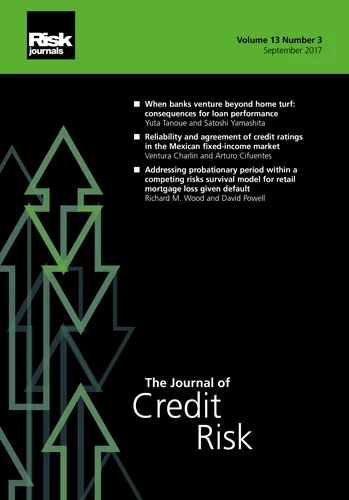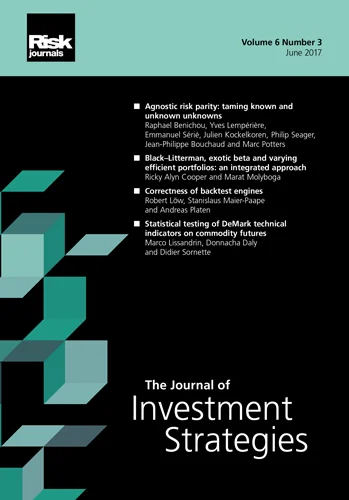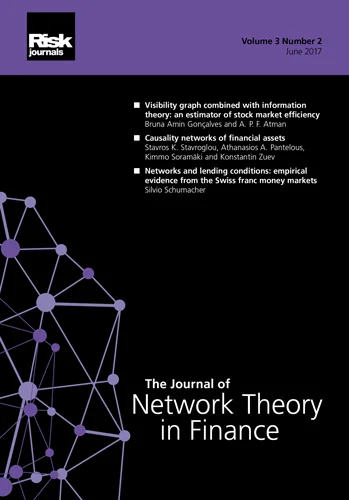Journal of Financial Market Infrastructures
ISSN:
2049-5412 (online)
Editor-in-chief: Manmohan Singh
Volume 8, Number 2 (December 2019)
Editor's Letter
Welcome to the second issue of Volume 8 of The Journal of Financial Market Infrastructures, which contains three papers.
In this installment we have two papers from the real-time gross settlement (RTGS) world: a Furfine study on Norwegian data and an investigation into whether participants in TARGET2 are long sleepers, extreme early birds or one of ten other payment profiles. The issue’s third paper zooms in on a vital part of the default management process of central counterparties: the auction.
In “Identification of interbank loans and interest rates from interbank payments: a reliability assessment”, our first paper, Q. Farooq Akram, Mats B. Fevolden and Lyndsie Smith assess the reliability of the Furfine algorithm. In the literature, this algorithm is the standard way of extracting unsecured overnight money market loans between banks. The output of this kind of study is usually a set of paired RTGS transactions identified as a money market transaction at a certain confidence level. The interesting element here, though, is that the authors have already obtained such a set from the banks. This allows them to assess the quality and accuracy of the Furfine filtering algorithm. They conclude that their filter was able to correctly identify all
223 reported loans, which constituted just 1.8% of one month’s worth of data in NBO (Norges Bank’s RTGS system).
In the issue’s second paper, Marc Glowka studies clustering techniques to generate payment profiles of participants in TARGET2 that can be used for monitoring purposes, eg, when a bank deviates significantly from its usual daily behavior. “Profiling banks: how to use cluster analysis with payment system data” sees Glowka using a k-means algorithm, where the number of clusters k is chosen from a cluster range, ie, the number of clusters is chosen by the algorithm from the cluster range and then verified by running it 1000 times. This clustering is based on one year of TARGET2 data. In the author’s case, k D 10, and those ten profiles have intuitive, appealing names such as “long sleeper” (maximum when 20% of daily transactions are sent in between 10:00 and 11:00) or “extreme early bird” (maximum when more than 40% of transactions occur within the first business hour). Of particular relevance regarding timely settlement are the participants labeled “late payers” and “teatime payers”.
In our third paper, “Central counterparty auction design”, Gerardo Ferrara, Xin Li and Daniel Marszalec consider the auction part of the default management process. The design of an auction plays a very important role in limiting losses on the defaulter’s portfolio, eg, by making sure that enough clearing members participate in the auction and that the bids are realistic. This is a topical issue given the default of a clearing participant, Mr. Aas, at Nasdaq Clearing (Scandinavian CCP) in September 2018. The authors focus on the incentives for clearing members to bid realistically (such as juniorization of a member’s default fund contribution when the bid of that member is too low) and consider the case where penalties (another incentive) may turn out to be counterproductive from a financial stability perspective. On the basis of a theoretical, stylized model, they prefer a second price with loss-sharing auction.
I hope you enjoy reading this issue of The Journal of Financial Market Infrastructures.
Ron Berndsen
LCH and Tilburg University
Papers in this issue
Identification of interbank loans and interest rates from interbank payments: a reliability assessment
The authors investigate the reliability of the “Furfine filter” often used to identify interbank loans and interest rates from interbank payments settled at central banks.
Profiling banks: how to use cluster analysis with payment system data
In this paper, payment profiles for participants are identified by applying clustering techniques to TARGET2 data.
Central counterparty auction design
The authors analyze the role of auctions in managing the default of a central counterparty’s clearing member.








